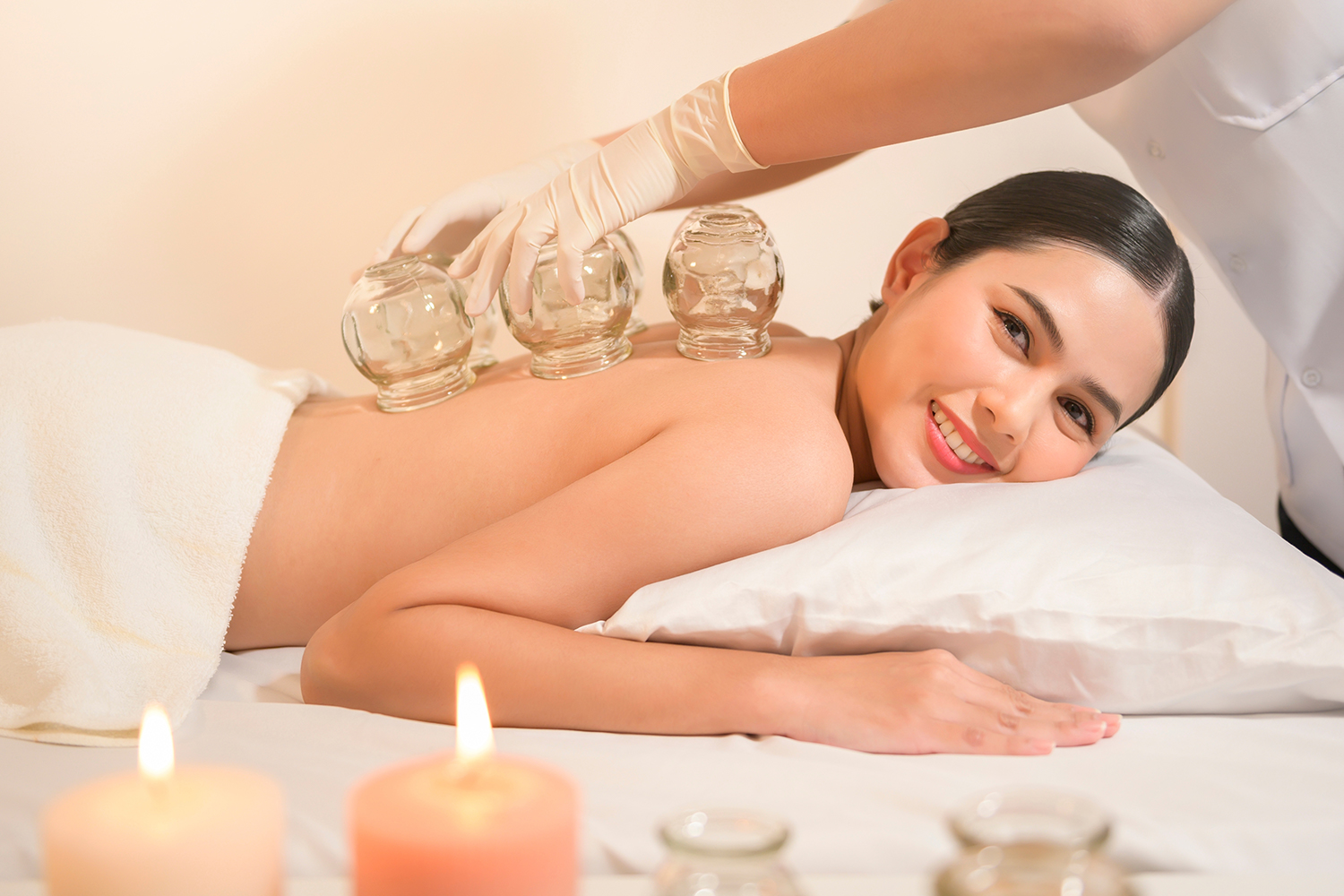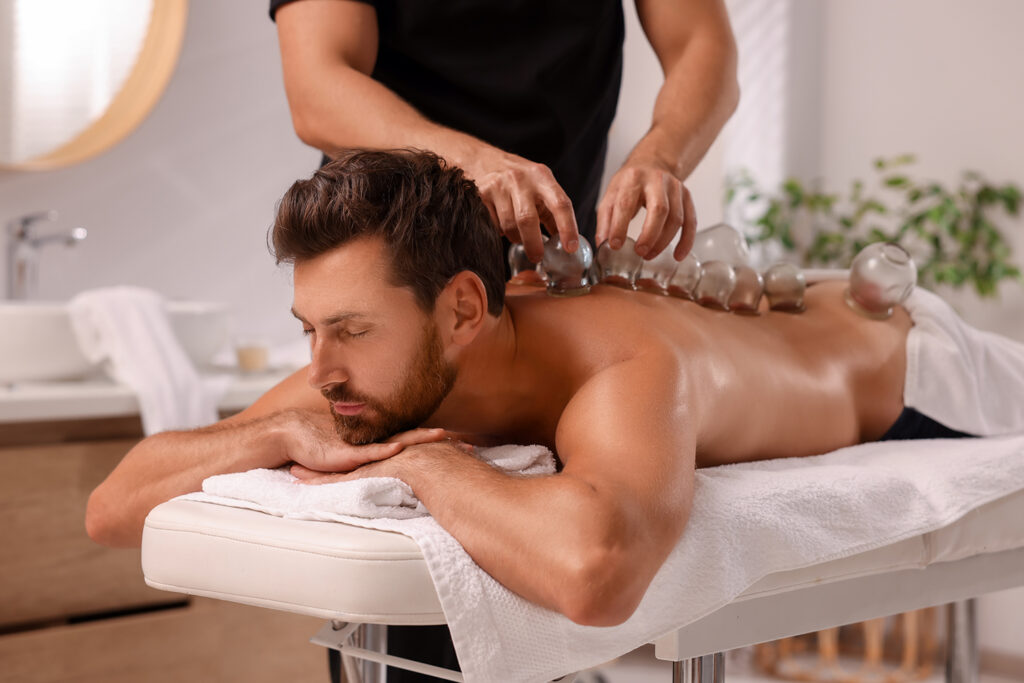Cupping therapy

Cupping Therapy: Ancient Healing, Modern Relief
Cupping therapy, an ancient practice dating back thousands of years, involves placing cups on the skin to create suction. Traditionally, practitioners would use glass cups heated with fire to create a vacuum effect, although modern methods may involve silicone cups and suction pumps. The suction draws the skin upward into the cup, which is believed to promote blood flow, relieve muscle tension, and encourage the body’s natural healing processes. This therapy is often used to address various conditions, including pain management, inflammation, relaxation, and improving overall well-being. Cupping therapy is typically performed by trained practitioners who assess the individual’s specific needs and tailor the treatment accordingly.
People who might benefit from cupping therapy include those experiencing chronic pain, muscle tension, or stress-related symptoms. Athletes often turn to cupping to aid in muscle recovery and performance enhancement. Additionally, individuals seeking alternative or complementary therapies for conditions such as fibromyalgia, arthritis, or respiratory issues may find relief through cupping. However, it’s essential to consult with a healthcare professional before undergoing cupping therapy, especially for those with certain medical conditions or pregnant individuals. Overall, cupping therapy offers a non-invasive and potentially effective approach to promoting health and well-being, but individual experiences and outcomes may vary.


Frequently Asked Questions
While some people may experience mild discomfort or a sensation of tightness during cupping, it is generally not painful. The level of suction can be adjusted to suit individual comfort levels, and any discomfort usually subsides quickly after the cups are removed.
Cupping therapy is commonly used to address a range of conditions, including chronic pain, muscle tension, inflammation, stress, and respiratory issues. It is also popular among athletes for muscle recovery and performance enhancement.
The effects of cupping therapy can vary depending on the individual and the condition being treated. Some people may experience immediate relief, while others may require multiple sessions to achieve optimal results. The benefits of cupping therapy can last anywhere from a few days to several weeks.
While cupping therapy is generally safe when performed by a trained practitioner, some people may experience temporary side effects such as bruising, skin irritation, or dizziness. These side effects are usually mild and short-lived. It is essential to consult with a healthcare professional before undergoing cupping therapy, especially for those with certain medical conditions or pregnant individuals.
The frequency of cupping therapy sessions depends on individual needs and the condition being treated. Some people may benefit from weekly sessions for a specific period, while others may find monthly maintenance sessions sufficient. Your cupping therapist will assess your condition and recommend a suitable treatment plan tailored to your needs.



